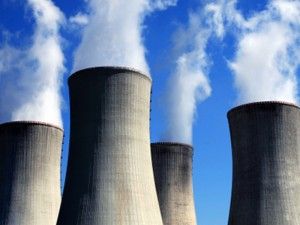
© iStock
In the latest development in the debate over to what extent there is a link between childhood leukaemia and radiation from nuclear power plants, a French study has found a doubling in the incidence of the disease among children under 5 living within 5-kilometre radius of a nuclear plant.
The study, conducted by the Institut de Radioprotection et de Surete Nucleaire (INSERM) and
reported in the
International Journal on Cancer in January 2012, looked at child leukaemia cases nationwide diagnosed between 2002 and 2007, with addresses coded around 19 nuclear power plants. It demonstrated a stastically signficant doubling of the incidence of leukaemia childhood near nuclear power plants.
The French study confirms an earlier German study, known as the KiKK, which found a doubling of the incidence of child leukaemia near nuclear power plants, and an increased risk of 60 per cent for all childhood cancers. The KiKK findings were confirmed by the German Federal Office for Radiation Protection.
However, last year the UK government's scientific advisory Committee on the Medical Effects of Radiation on the Environment (COMARE), in a
report 'Further consideration of the incidence of childhood leukaemia around nuclear power plants in Great Britain' concluded that it, 'has found no reason to change its previous advice that there is no evidence to support the view that there is an increased risk of childhood leukaemia and other cancers in the vicinity of NPPs [nuclear power plants] due to radiation effects.'
The report analysed geographical data on the incidence of leukaemia in children under 5 living in the vicinity of 13 nuclear power plants. It used cancer registration data for Great Britain from 1969 to 2004.
Dr Paul Dorfman, of the University of Warwick who earlier
commented in the
Ecologist about the link between childhood leukaemia and nuclear power plants says, 'what the French study does is confirm the earlier KiKK findings, a very statistically sound study by the German Childhood Cancer Registry'.
COMARE accepted the findings of the KiKK study, but rather than radiation being a causative factor, it pointed to growing evidence of the role of a viral infection, the so-called population mixing theory. 'There is some potential for this to happen, but no virus has actually been identified, it's just a suggestion, a concept. Because a virus hasn't been identified, COMARE can't show causation. For COMARE to use this as a blanket explanation for an increase in leukaemia rates is potentially misleading. It is not an either/or. In other words, radiation may very well play a part in these ill health excess,' says Dr Dorfman.
Dr Dorfman, the former Secretary to the government's Committee examining radiation risks from internal emitters (CERRIE), says 'It does seem clear that there is something going on around nuclear plants in Germany, in the UK around Sellafield and now in France. No matter what COMARE say, the scientific evidence for a clear association, if not a causal link, between operating nuclear plants and ill health in communities nearby seems increasingly compelling.'
When asked for comment, a member of COMARE's Secretariat, Dr Kerry Broom, said that it is aware of the French INSERM study and will be discussing it at the next COMARE meeting in March.
Reader Comments
to our Newsletter